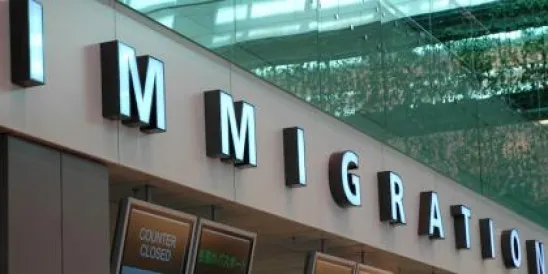Per the Immigration and Nationality Act (INA) § 286(m), 8 U.S.C. 1356(m), the Department of Homeland Security (DHS) has the authority to charge fees for immigration adjudication and naturalization services at a level to “ensure recover of the full costs of providing all such services, including the costs of similar services provided without charge to asylum applicants or other immigrants.” U.S. Citizenship and Immigration Services (USCIS) is primarily funded by these fees, which are used to pay for the cost of processing immigration benefit requests.
In 2015, USCIS conducted a comprehensive fee review and determined that the current Fee Schedule does not fully recover the costs of the services it provides. USCIS’ projected FY 2016/2017 total operating costs are expected to exceed projected total revenue; if USCIS continues to operate at current fee levels, it will experience an average annual shortfall of $560 million. It became clear that USCIS must adjust the current fee schedule to recover the full cost of processing immigration benefits and to continue to maintain or improve current service delivery standards.
Thus, on May 4, 2016, DHS published a notice of proposed rulemaking in the Federal Register inviting public comment on a proposed adjustment in the USCIS Fee Schedule, which was last updated on Nov. 23, 2010. Specifically, DHS proposes to increase USCIS fees by a weighted average of 21 percent, but as evident in the following table, the fee increases for EB-5 applications are well beyond this number:
Under the proposed rule, applications associated with the EB-5 program are subject to the most significant fee increases, as there are both new fees and fee bumps of more than 100 percent for Forms I-526 and I-924. DHS justifies this significant increase by pointing to the recent and continued growth of the EB-5 Program – in the 13 month period from Aug. 1, 2014 to Aug. 31, 2015, USCIS received a total of 412 Form I-924 Applications for Regional Center Designation. Since the establishment of the Immigrant Investor Program Office (IIPO) at USCIS in 2012, staffing needs have increased for improving regulatory compliance, managing the program, and ensuring identification of fraud, national security, and public safety concerns within the program. Additionally, DHS maintains that USCIS plans to conduct more site visits to regional centers and associated commercial enterprises to verify information provided in regional center applications and investor petitions. However, the proposed rule does not mention faster processing times or better services that will result from the considerable fee increases.
The proposed rule also adds a new fee of $3,035 for filing the EB-5 program’s Form I-924A, which approved EB-5 regional centers are required to file annually or on request to demonstrate continued eligibility for their designation. Although regional centers are required to file Form I-924A annually, there is currently no fee and DHS does not recover the processing costs associated with these filings. This new fee is justified in the proposed rule as a result of the significant costs USCIS incurs to review Form I-924A applications and administer the EB-5 regional center program, which is continuing to grow exponentially. There are approximately 800 approved regional centers (an increase from 340 at the end of FY 2013), and USCIS needs to spend substantial time and resources handing I-924A filings. Moreover, USCIS intends to revise the regulations governing Form I-924A filings to include a provision that will allow regional centers to withdraw their designation and discontinue participation in the EB-5 program.
DHS will be accepting public comment on this proposed rule through July 5, 2016, after which time it is expected to be adopted as final and go into effect in the fall of 2016. If you are considering creating or expanding a Regional Center, or if you are planning to make an EB-5 investment as an alien entrepreneur, you should consider filing as soon as possible to avoid paying significantly higher filing fees.


 />i
/>i


